National Forest Ecosystem Inventory System of China: Methodology and Applications
Abstract
1. Introduction
2. Current Forest Ecosystem Inventories in the World and China
3. Framework and Methodology of CFEIS
3.1. Field Observations (FOs) of Ecological Indicators
3.2. Distributed Valuation (DVs) of Forest Ecosystem Services
4. Applications and Practices for CFEIS in China
5. Implications for Other Countries
6. Potential Questions
7. Conclusions
Author Contributions
Funding
Conflicts of Interest
References
- Adger, N.; Brown, K.; Cervigni, R.; Moran, D. Total economic value of forests in Mexico. Ambio 1995, 24, 286–296. [Google Scholar]
- Mäler, K.G.; Aniyar, S.; Jansson, A. Accounting for ecosystem services as a way to understand the requirements for sustainable development. Proc. Natl. Acad. Sci. USA 2008, 105, 9501–9506. [Google Scholar] [CrossRef] [PubMed]
- Zhao, T.Q.; Ouyang, Z.Y.; Zheng, H.; Wang, X.K.; Miao, H. Forest ecosystem services and their valuation in china. J. Nat. Resour. 2004, 4, 480–491. [Google Scholar]
- Bagstad, K.J.; Johnson, G.W.; Voigt, B.; Villa, F. Spatial dynamics of ecosystem service flows: A comprehensive approach to quantifying actual services. Ecosyst. Serv. 2013, 4, 117–125. [Google Scholar] [CrossRef]
- Bennett, E.M.; Peterson, G.D.; Gordon, L.J. Understanding relationships among multiple ecosystem services. Ecol. Lett. 2009, 12, 1394–1404. [Google Scholar] [CrossRef]
- Costanza, R.; D’arge, R.; De Groot, R.S.; Farber, S.; Grasso, M.; Hannon, B.; Limburg, K.; Naeem, S.; O’neill, R.V.; Paruelo, J.; et al. The value of the world’s ecosystem services and natural capital. Nature 1997, 387, 253–260. [Google Scholar] [CrossRef]
- Daily, G.C. Nature’s Services: Societal Dependence on Natural Ecosystems; Island Press: Washington, DC, USA, 1997. [Google Scholar]
- Seppelt, R.; Dormann, C.F.; Eppink, F.V.; Lautenbach, S.; Schmidt, S. A quantitative review of ecosystem service studies: Approaches, shortcomings and the road ahead. J. Appl. Ecol. 2011, 48, 630–636. [Google Scholar] [CrossRef]
- Yang, J.; Dai, G.; Wang, S. China’s national monitoring program on ecological functions of forests: An analysis of the protocol and initial results. Forests 2015, 6, 809–826. [Google Scholar] [CrossRef]
- Kleinn, C.; Dees, M.; Polley, H. Forest Inventory and Survey Systems in Germany; Federal Ministry of Food, Agriculture and Forestry: Bonn, Germany, 1998.
- Riemann, R.; Wilson, B.T.; Lister, A.; Parks, S. An effective assessment protocol for continuous geospatial datasets of forest characteristics using USFS Forest Inventory and Analysis (FIA) data. Remote Sens. Environ. 2010, 114, 2337–2352. [Google Scholar] [CrossRef]
- Shaw, C.H.; Hilger, A.B.; Metsaranta, J.; Kurz, W.A.; Russo, G.; Eichel, F.; Stinsonb, G.; Smyth, C.; Filiatrault, M. Evaluation of simulated estimates of forest ecosystem carbon stocks using ground plot data from Canada’s national forest inventory. Ecol. Model. 2014, 272, 323–347. [Google Scholar] [CrossRef]
- Tomppo, E.; Olsson, H.; Stahl, G.; Nilsson, M.; Hagner, O.; Katila, M. Combining national forest inventory field plots and remote sensing data for forest databases. Remote Sens. Environ. 2008, 112, 1982–1999. [Google Scholar] [CrossRef]
- Bachmann, P.; Köhl, M.; Päivinen, R. Assessment of Biodiversity for Improved Forest Planning; Springer Science & Business Media: Dordrecht, The Netherlands, 2013. [Google Scholar]
- Paivinen, R.; Lund, H.G.; Poso, S.; Zawila-Niedzwiecki, T. IUFRO International Guidelines for Forest Monitoring: A Project of IUFRO Working Party S4; IUFRO: Vienna, Austria, 1994. [Google Scholar]
- Woodall, C.W.; Amacher, M.C.; Bechtold, W.A.; Coulston, J.W.; Jovan, S.; Perry, C.H.; Randolph, K.C.; Schulz, B.K.; Smith, G.C.; Tkacz, B.; et al. Status and future of the forest health indicators program of the USA. Environ. Monit. Assess. 2011, 177, 419–436. [Google Scholar] [CrossRef]
- He, H.; Pan, Y.Z.; Zhu, W.Q.; Liu, X.L.; Zhang, Q.; Zhu, X.F. Measurement of terrestrial ecosystem services value in China. Chin. J. Appl. Ecol. 2005, 16, 1122–1127. [Google Scholar]
- Ouyang, Z.Y.; Zheng, H.; Xiao, Y.; Polasky, S.; Liu, J.; Xu, W.; Wang, Q.; Zhang, L.; Xiao, Y.; Rao, E.; et al. Improvements in ecosystem services from investments in natural capital. Science 2016, 352, 1455–1459. [Google Scholar] [CrossRef] [PubMed]
- King, D.J. Airborne remote sensing in forestry: Sensors, analysis and applications. For. Chron. 2000, 76, 859–876. [Google Scholar] [CrossRef]
- Woods, M.; Pitt, D.; Penner, M.; Lim, K.; Nesbitt, D.; Etheridge, D.; Treitz, P. Operational implementation of a LiDAR inventory in Boreal Ontario. For. Chron. 2011, 87, 512–528. [Google Scholar] [CrossRef]
- Klos, R.J.; Wang, G.G.; Bauerle, W.L.; Rieck, J.R. Drought impact on forest growth and mortality in the southeast USA: An analysis using forest health and monitoring data. Ecol. Appl. 2009, 19, 699–708. [Google Scholar] [CrossRef]
- Niu, X.; Wang, B.; Liu, S.R.; Liu, C.J.; Wei, W.J.; Kauppi, P.E. Economical assessment of forest ecosystem services in China: Characteristics and implications. Ecol. Complex. 2012, 11, 1–11. [Google Scholar] [CrossRef]
- Xie, G.; Li, W.; Xiao, Y.; Zhang, B.; Lu, C.; An, K.; Wang, J.; Xu, K.; Wang, J. Forest Ecosystem Services and Their Values in Beijing. Chin. Geogr. Sci. 2010, 20, 51–58. [Google Scholar] [CrossRef]
- Anielski, M.; Wilson, S. Counting Canada’s Natural Capital: Assessing the Real Value of Canada’s Boreal Ecosystems; Canadian Boreal Initiative; Pembina Institute: Ottawa, ON, Canada, 2005.
- Merlo, M.; Croitoru, L. Valuing Mediterranean Forests: Towards Total Economic Value; CABI Publishing: Wallingford, UK, 2005. [Google Scholar]
- Ouyang, Z.Y.; Wang, X.K.; Miao, H. A primary study on Chinese terrestrial ecosystem services and their ecological-economic values. Acta Phys. Sin. 1999, 19, 607–613. [Google Scholar]
- Yang, G.T.; Wang, B.; Ying, T.; Li, F.; Yang, S.T.; Huang, L.S.; Liu, Z.Y.; Niu, X. Study on forest Ecosystem Services and Ecosystem Services in Heilongjiang Province; China Forestry Press: Beijing, China, 2016. [Google Scholar]
- Zhang, B.; Li, W.; Xie, G. Ecosystem services research in China: Progress and perspective. Ecol. Econ. 2010, 69, 1389–1395. [Google Scholar] [CrossRef]
- Project Group of Assessment of Forest Ecological Services in China. Assessment of Forest Ecological Services in China; China Forestry Press: Beijing, China, 2010. [Google Scholar]
- Krieger, D.J. The Economic Value of Forest Ecosystem Services: A Review; The Wilderness Society: Washington, DC, USA, 2001. [Google Scholar]
- Torras, M. The total economic value of Amazonian deforestation, 1978–1993. Ecol. Econ. 2000, 33, 283–297. [Google Scholar] [CrossRef]
- Herold, A.; Ulmer, U. Stand stability in the Swiss National Forest Inventory: Assessment technique, reproducibility and relevance. For. Ecol. Manag. 2001, 145, 29–42. [Google Scholar] [CrossRef]
- Ranneby, B.; Cruse, T.; Haegglund, B.; Jonasson, H.; Swaerd, J. Designing a new national forest survey for Sweden. Studia For. Suec. 1987, 177, 2–28. [Google Scholar]
- Xiao, X.W.; Yao, C.T.; Chen, X.F.; Song, C.Q.; Zeng, W.S.; Zhang, T.P. Main points of forest resource inventory in US and guiding suggestions. For. Resour. Manag. 2005, 2, 27–42. [Google Scholar]
- Ye, R.H. New design of the US national forest inventory and analysis system. For. Resour. Manag. 2003, 3, 65–68. [Google Scholar]
- Chen, X.F.; Zeng, W.S.; Xiong, Z.B.; Zhang, M. New development of China National Forest Inventory (NFI): On revision of NFI technical regulations. For. Resour. Manag. 2004, 5, 40–45. [Google Scholar]
- State Forestry Administration of China. China National Forest Inventory Technical Regulations; State Forestry Administration of China: Beijing, China, 2004.
- Shi, H.X.; Wang, B.; Niu, X. Analysis of Chinese forest ecosystem services characteristics based on continuous inventory system for forest ecology. J. Beijing For. Univ. 2016, 38, 42–50. [Google Scholar]
- Niu, X.; Wang, B. Assessment of forest ecosystem services in china: A methodology. J. Food Agric. Environ. 2013, 11, 2249–2254. [Google Scholar]
- Wang, B.; Li, S.N. Construction and techniques of the digital forest long-term ecological research station. Sci. Silvae Sin. 2006, 42, 116–121. [Google Scholar]
- Wang, B. Construction and utilization of continuous inventory system for forest ecology. J. Beijing For. Univ. 2015, 37, 1–8. [Google Scholar]
- Niu, X. Study on Forest Ecological Benefits Distributed Measurement and Its Quantification Compensation: Taking Guangdong and Liaoning Province as Demonstration Cases; Beijing Forestry University: Beijing, China, 2012. [Google Scholar]
- State Forestry Administration of China (CSFA). National Report of Ecological Benefit Monitoring for the Grain for Green Project: 2014; China Forestry Press: Beijing, China, 2015.
- CSFA. National Report of Ecological Benefit Monitoring for the Grain for Green Project: 2015; China Forestry Press: Beijing, China, 2016. [Google Scholar]
- CSFA. National Report of Ecological Benefit Monitoring for the Natural Forest Protection Project: 2015; China Forestry Press: Beijing, China, 2016. [Google Scholar]
- Ren, J.; Song, Q.F.; Shan, G.M.; Zhang, H.Y.; Niu, X.; Wang, B. Study on Forest Ecosystem Services and Ecosystem Services in Jilin Province; China Forestry Press: Beijing, China, 2016. [Google Scholar]
- Xia, S.G.; Niu, X.; Song, Q.F.; Wang, X.J.; Wang, B. Study on Forest Ecosystem Services and Ecosystem Services in Anhui Province; China Forestry Press: Beijing, China, 2016. [Google Scholar]
- Song, Q.F.; Wang, B.; Wang, J.S.; Niu, X. Endangered and endemic species increase forest conservation values of species diversity based on the Shannon-Wiener index. iForest 2016, 9, 469–474. [Google Scholar] [CrossRef]
- Niu, X.; Wang, B.; Wei, W.J. Chinese forest ecosystem research network: A platform for observing and studying sustainable forestry. J. Food Agric. Environ. 2013, 11, 1008–1016. [Google Scholar]
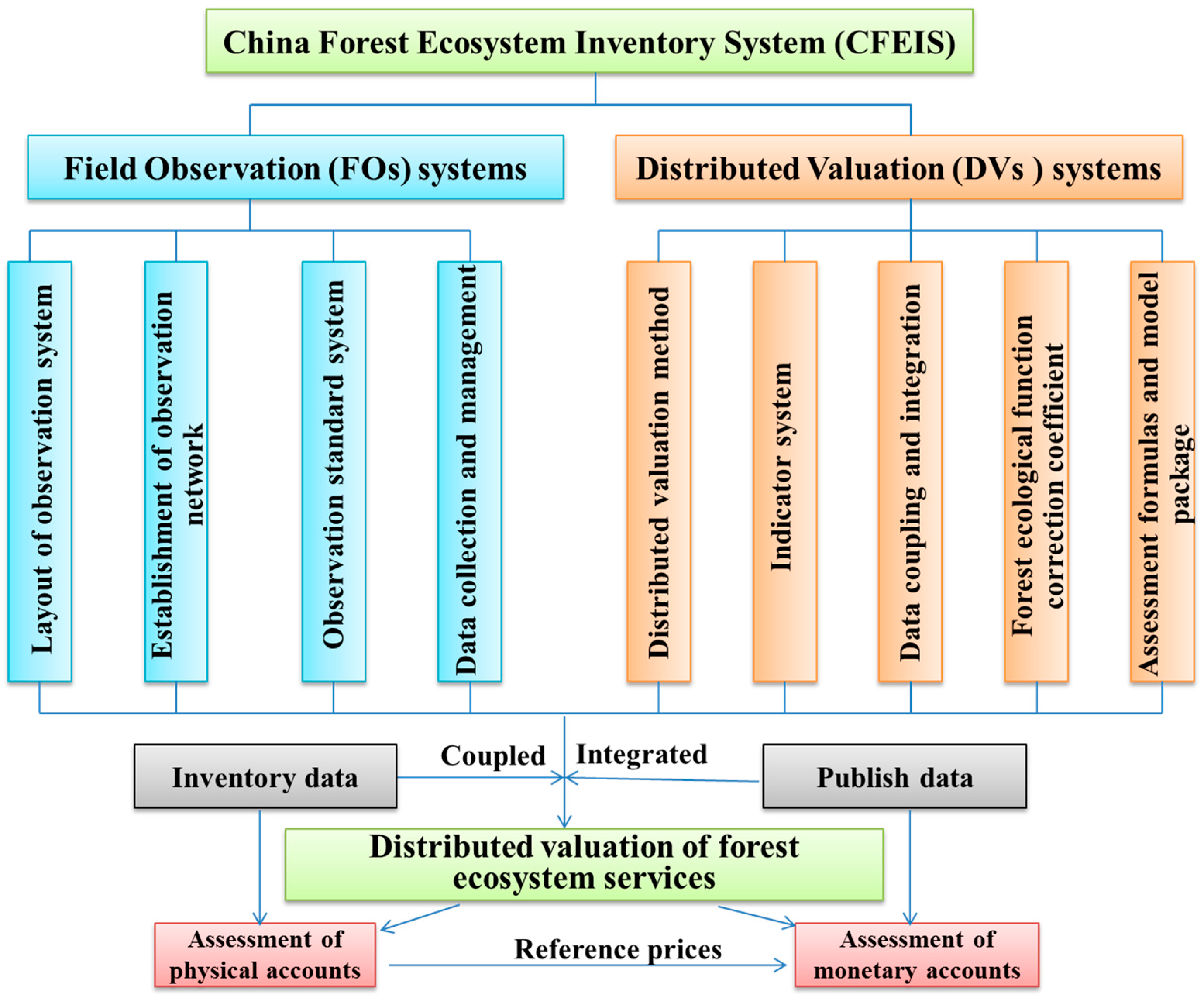
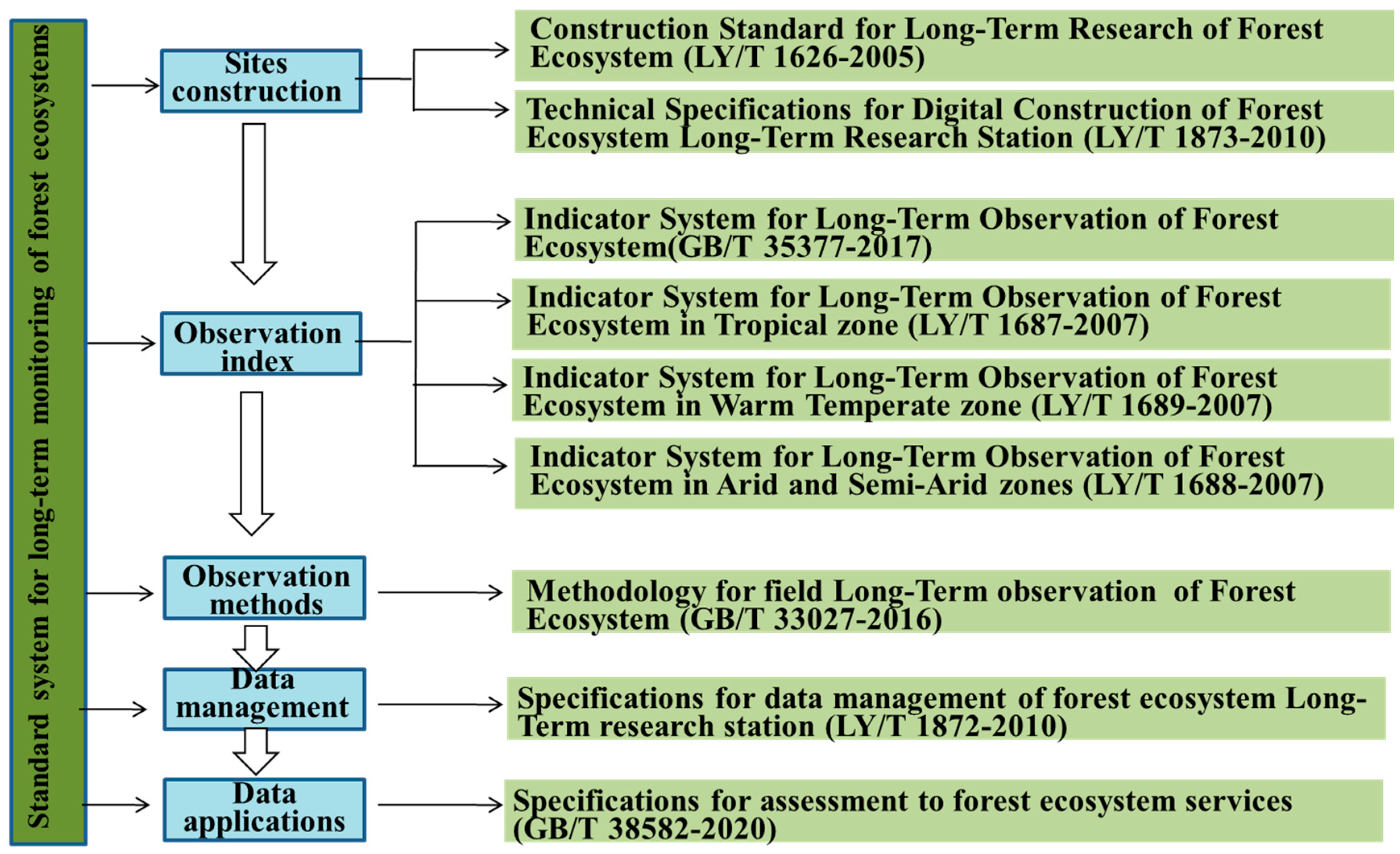
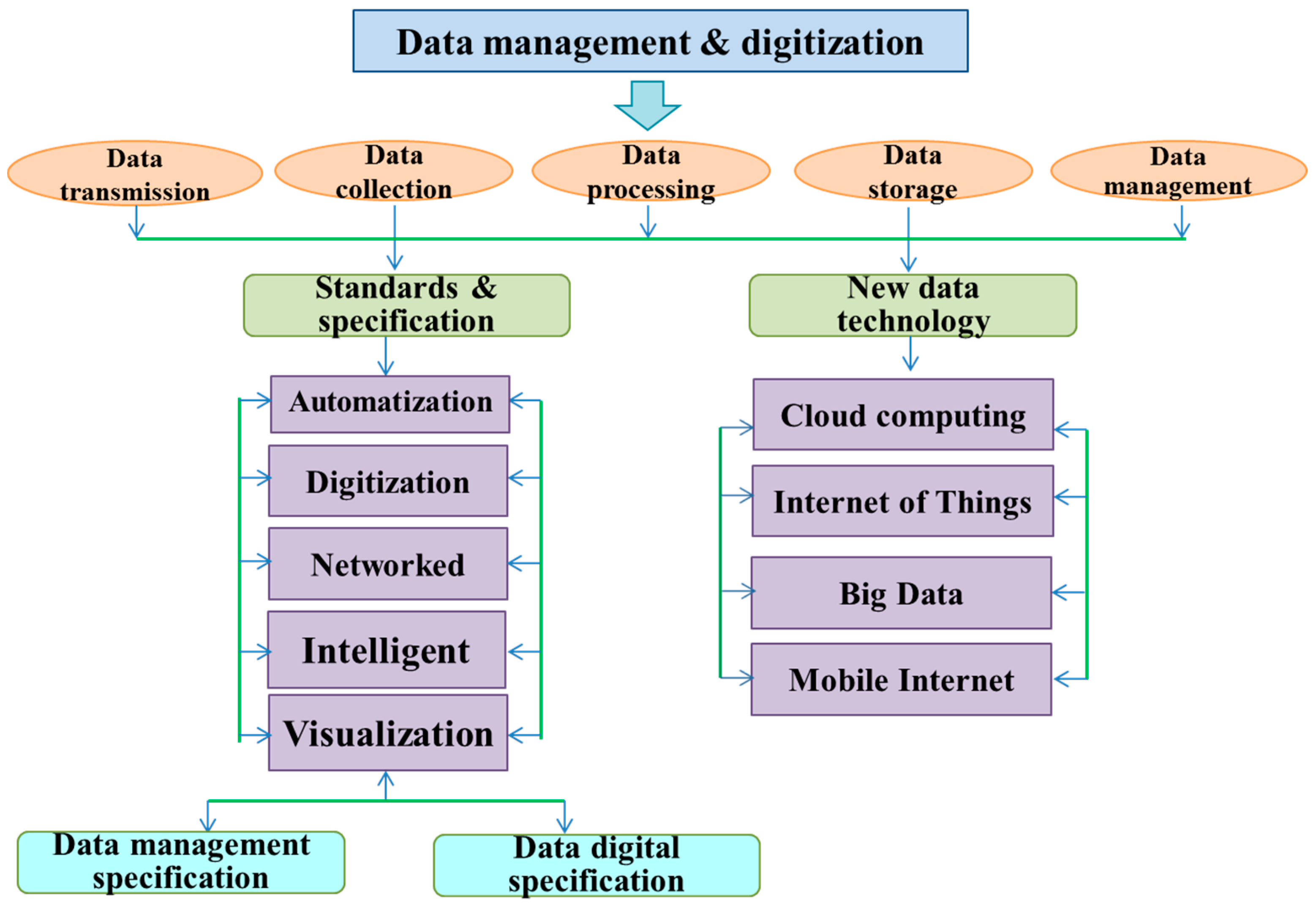
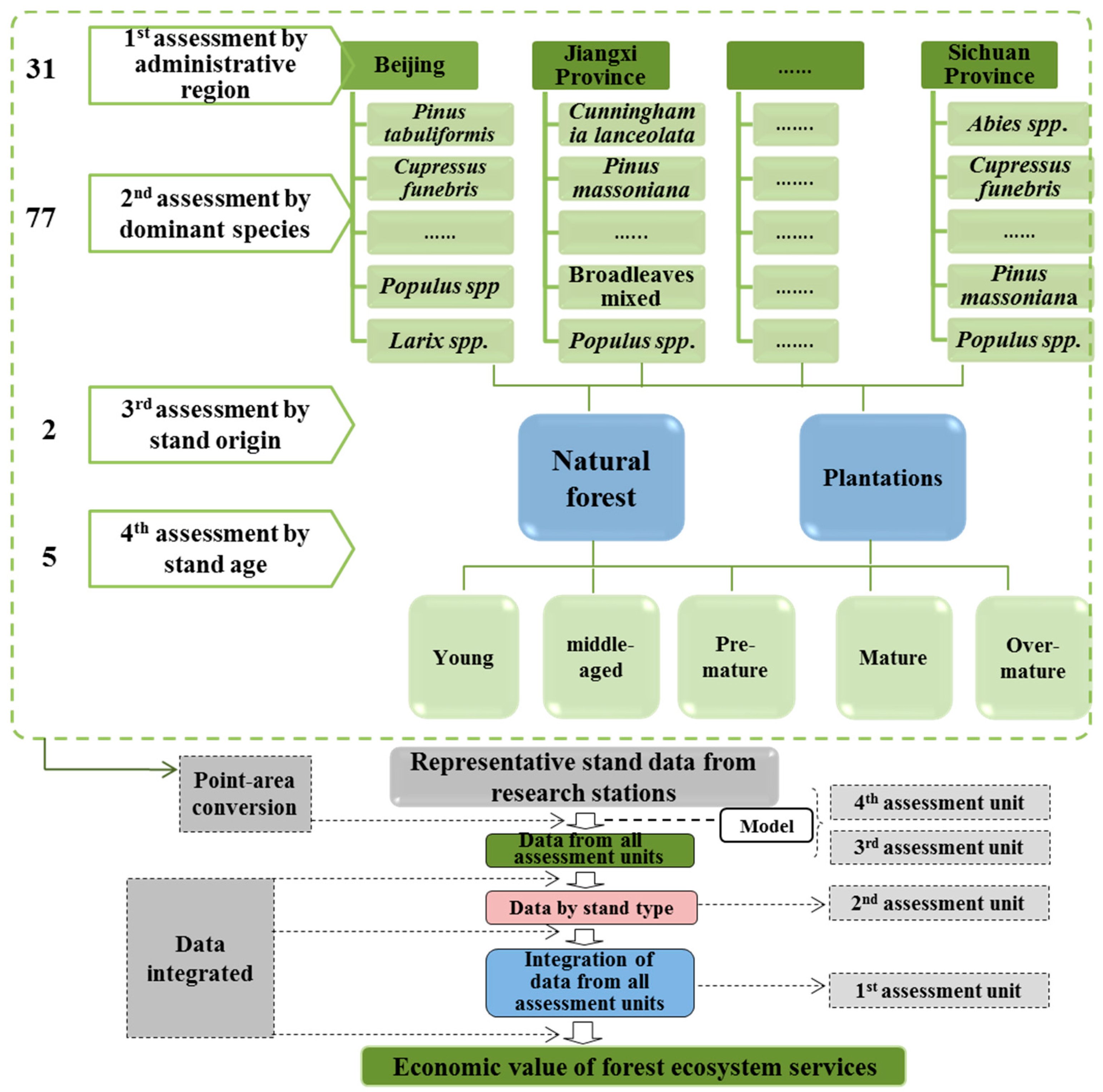
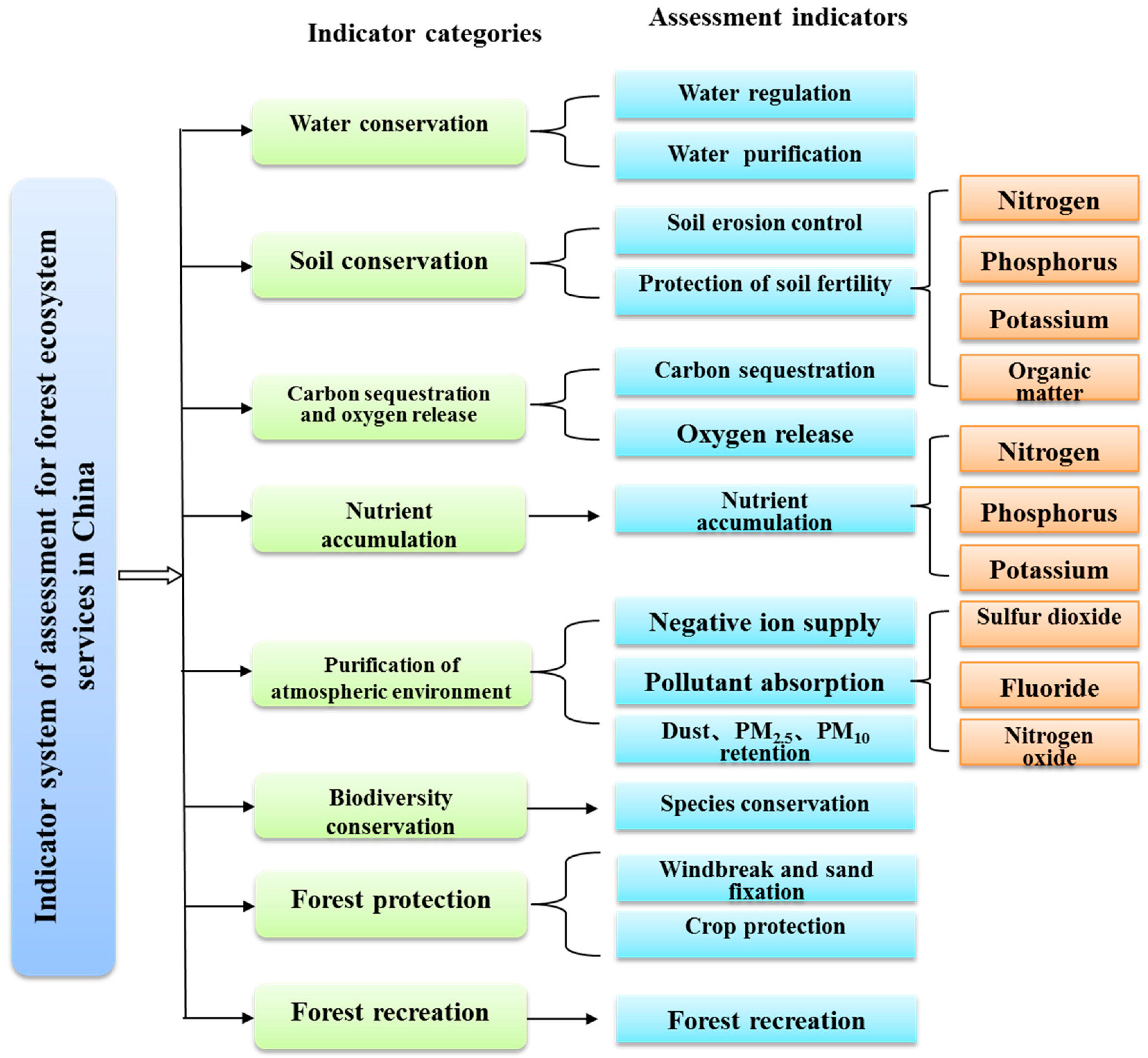
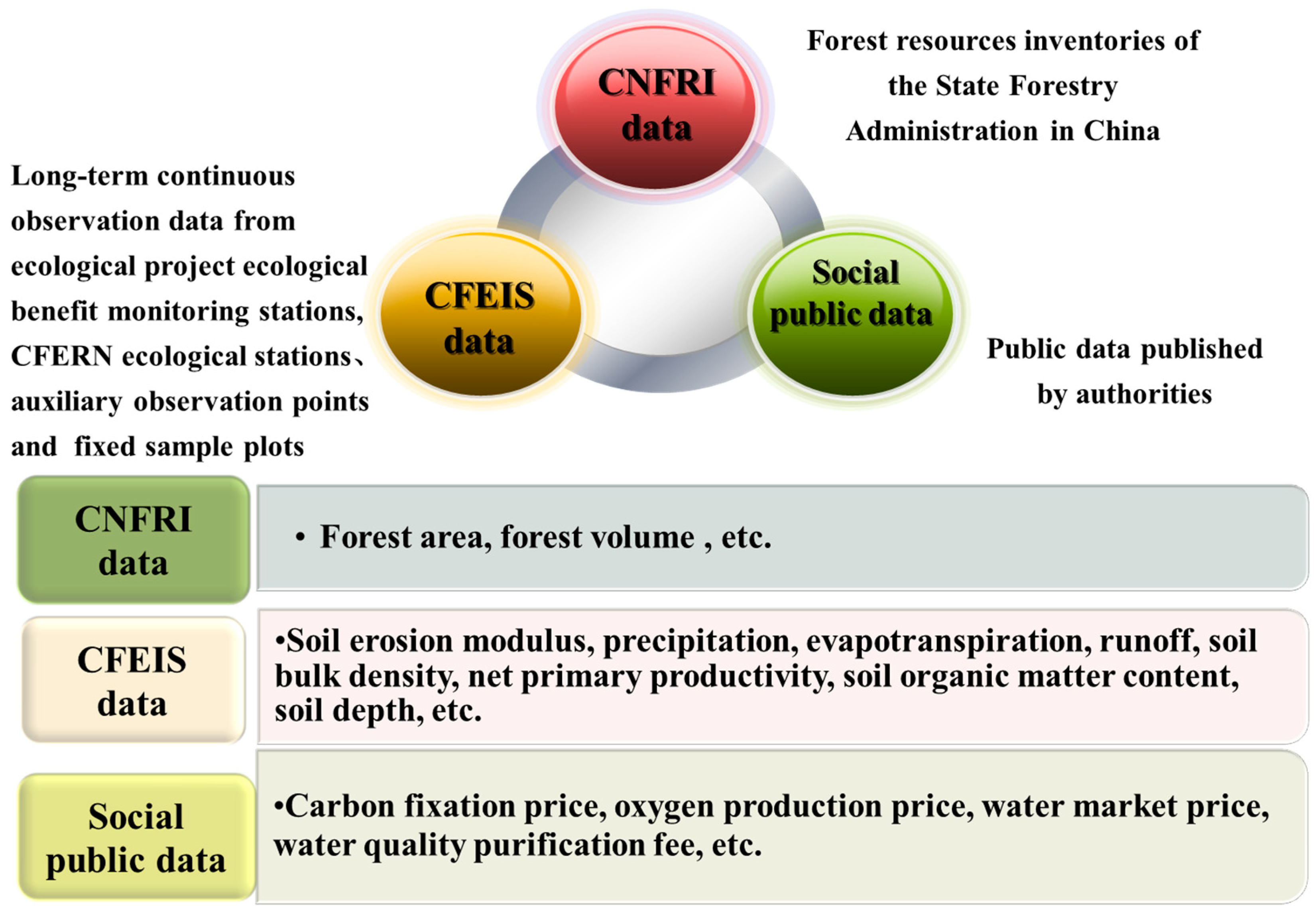
| Nations | Starting Year | Aims for Inventory | Inventory Items | References |
|---|---|---|---|---|
| Switzerland | 1983 | Timber resource investigations | Change in forest resources | Herold and Ulmer, 2001 [32] |
| 1993 | Forest environmental monitoring | Forest environmental conditions | ||
| Finland | 1927 | Timber resource investigations | Change in forest resources | Tomppo et al. 2008 [13] |
| 1964 | Multi-resource surveys | Integrated resources | ||
| Sweden | 1923 | Timber resource investigations | Change in forest resources | Ranneby et al. 1987 [33] |
| 1983 | Forest environmental monitoring | Forest environmental conditions | ||
| 1993 | Multi-resource surveys | Integrated resources | ||
| United States | 1928 | Forest Inventory and Analysis | Change in forest resources | Riemann et al. 2010 [11] |
| 1990 | Forest Health Monitoring | Integrated resources | Klos et al. 2009 [21] | |
| Germany | 1986 | Multi-resource surveys | Integrated resources | Paivinen et al. 1994 [15] |
| China | 1973 | Timber resource investigations | Change in forest resources | |
| 2009 | Forest environmental monitoring | Forest environmental conditions |
| Standard System Classification | Standard Usage |
|---|---|
| Site construction | Determine infrastructure, observation facilities, instruments and equipment, etc. |
| Observation index | Establish observation index system |
| Observation method | Clarify observation method for observation index |
| Data management | Digital construction for equipment for data transmission, data processing and analysis |
| Data management, data quality management, data security management, etc. | |
| Data applications | Establish assessment system, package of evaluation formula and model |
| Assessment Area | Assessment Period | Total Value of Forest Ecosystem Service (Trillion CNY/Year) | References |
|---|---|---|---|
| National scale | |||
| China | 2004–2008 | 10.01 | Project Group of Assessment of Forest Ecological Services in China (2010, 2018) |
| China | 2009–2013 | 12.68 | Project Group of Assessment of Forest Ecological Services in China (2018) |
| Ecological project scale | |||
| Grain for Green projects a | 2014 | 1.00 | CSFA (State Forestry Administration of China) 2015 (China 2015) |
| Grain for Green projects b | 2015 | 0.13 | CSFA 2016a (China 2016a) |
| Natural Forest Protection Project c | 2016 | 0.64 | CSFA 2016b (China 2016b) |
| Provincial scale | |||
| Heilongjiang | 2015 | 1.76 | Yang et al. 2016 (Yanget al. 2016) |
| Jilin | 2014 | 0.84 | Ren et al. 2016 (Renet al. 2016) |
| Anhui | 2013 | 0.48 | Xia et al. 2016 (Xiaet al. 2016) |
© 2020 by the authors. Licensee MDPI, Basel, Switzerland. This article is an open access article distributed under the terms and conditions of the Creative Commons Attribution (CC BY) license (http://creativecommons.org/licenses/by/4.0/).
Share and Cite
Wang, B.; Niu, X.; Wei, W. National Forest Ecosystem Inventory System of China: Methodology and Applications. Forests 2020, 11, 732. https://doi.org/10.3390/f11070732
Wang B, Niu X, Wei W. National Forest Ecosystem Inventory System of China: Methodology and Applications. Forests. 2020; 11(7):732. https://doi.org/10.3390/f11070732
Chicago/Turabian StyleWang, Bing, Xiang Niu, and Wenjun Wei. 2020. "National Forest Ecosystem Inventory System of China: Methodology and Applications" Forests 11, no. 7: 732. https://doi.org/10.3390/f11070732
APA StyleWang, B., Niu, X., & Wei, W. (2020). National Forest Ecosystem Inventory System of China: Methodology and Applications. Forests, 11(7), 732. https://doi.org/10.3390/f11070732




